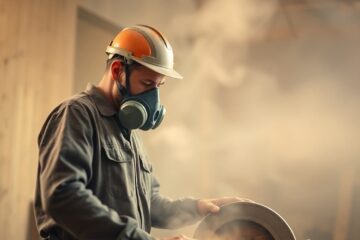It doesn’t really need an introduction, as there is probably not one person or business that hasn’t been affected in Australia, let alone around the world, but let’s talk about COVID-19 and the cultural effects it has had within Australian workplaces.
Since it’s identification in the Wuhan region of China in December, where its progression was initially slow but then rapidly spread around the world individuals, business and governments have been trying to manage the impact on health and economy.
Unfortunately, there has been a lot of misinformation communicated from valid and not so valid sources, sometimes due to lack of understanding or not enough information, and sometimes due to deliberately trying to scare people.
The facts are that while COVID-19 is a type of coronavirus which is known to cause some common colds, not much is known about it specifically. However, with each day more information is identified that can prevent infections, and also treat infected people more effectively, which reduces the strain on the hospital system.
Whether you believe it has been an overreaction by governments and businesses, or that perhaps there has not been enough done, everyone has been affected by this pandemic. How will this impact life in the workplace now, and into the future? Only time will tell.
One of the biggest changes we believe we will see, will be the way employees are treated when they come into work sick. Previously it was quite common for employees or contractors to come into work even if they looked to be on death’s door. Some of the more common reasons for this include:
- The worker believes they are more important than they are and no work can be completed without them
- The worker has been told that they must come in or risk their job
- The worker is a contractor and if they don’t work, they don’t get paid
Even taking away COVID-19 from the story, many WHS professionals have been trying to get people to stop coming in to work sick for years. Whether it is just a common cold, or a full blown influenza, some people can suffer only mild symptoms, while some have severe symptoms or even death. Is it fair that a whole site or office can be infected and take it home to their families because one person didn’t take precautions?

But now with COVID-19 we’ve seen more employers be more vigilant about ensuring their workers are not coming into work sick, especially when they are showing the mild symptoms of COVID-19. And workers are becoming more likely to stand up for themselves and say to their co-workers that it is not okay for them to be at work and risk infecting them. And it’s not just in workplaces, it is in public places like the beach, and in supermarkets. There have been numerous cases of people calling out others for not ‘social distancing’ or for having visible symptoms.
Will this be a continuing side effect of COVID-19 in the workplace, even after it is either eradicated or controlled?
While no-one wants to be afraid of sneezing or sniffling in public or at work without risk of being accused, avoided or being confronted, being able to go to work without being in fear of contracting a virus just for turning up will probably be quite inviting to a lot of people.
What about other cultural changes in the workplace due to COVID-19?
Will handshaking become a thing of the past? And should it anyway? We’ve all heard the jokes about people not washing their hands after going to the bathroom. It’s not just COVID-19 that can be transmitted via little ‘nasties’ on our hands. Did you know that you can transmit the following illnesses and diseases by hand contact1?
- Influenza
- Chicken pox
- Meningitis
- Hepatitis A
- And also bacteria like MRSA and E. coli
If you don’t want to shake hands for COVID-19 are you prepared to do it for other diseases and take that home to your family?
There is also wearing face masks. Some people hate them, some people don’t mind them and some people don’t understand them. Initially when not much was known about COVID-19, governments and advisory boards (like the WHO) advised against wearing masks. There was a lot of confusion and disagreement, which caused a lot of misinformation in the general public too.
We aren’t going to get into the science of it or debate about it, but there is a growing body of evidence to show that wearing masks is beneficial for almost everyone for different reasons and the WHO now recommends wearing them in many situations2. However; because it seems to be such a divisive issue people have been harassed for wearing masks, or for not wearing masks.
Will this be a culture change as well? If you have travelled anywhere in South East Asia, you will know that a large portion of the population have been wearing masks for years due to not wanting to get sick, and because of the bad pollution.
Some workplaces may be more affected than others, have you been affected in your workplace whether by choice, or by virtue? And do you foresee these changes will create a cultural shift in coming to work sick, hand shaking and people choosing to wear face masks even after the immediate threat of COVID-19 has passed?
How has it affected your day to day life at work, if at all?
Let us know your thoughts on the issue.
Sources:
- Infections you can spread by not washing your hands (Initial)
- Masks and COVID-19 (World Health Organization)
How can Safe-R Outcomes help your business?
Our Professional subscriptions contain many essential documents including:
- WHS Management Plans / Safety Manuals
- SWMS (if the job entails high risk tasks)
- a range of SOPs, Registers, Toolbox Talks, Checklists and Policies
These can all be downloaded and are not blank templates, so can be used immediately.
We also provide Induction training to help you on-board new employees and contractors.
As you can see it is all done for you so it makes it nice and simple. You can find out more on the Industries and Professions page.
If you’re concerned about the time commitment and knowledge required to implement the correct documents, procedures and training for forklift safety, Safe-R Outcomes can help. We strive to reduce the time and cost for businesses to implement their legally necessary safety requirements.


